《语义学教程 英文》
| 作者 | 李福印,(新西兰)(K.凯珀)Koenraad Kuiper 编者 |
|---|---|
| 出版 | 上海:上海外语教育出版社 |
| 参考页数 | 422 |
| 出版时间 | 1999(求助前请核对) 目录预览 |
| ISBN号 | 7810466941 — 求助条款 |
| PDF编号 | 82392798(仅供预览,未存储实际文件) |
| 求助格式 | 扫描PDF(若分多册发行,每次仅能受理1册) |
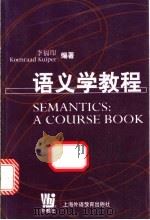
Tableof Contents1
Acknowledgements1
1. Semantic Levels and Approaches1
1.1 Language is hierarchic1
序(一)2
1.2 Meaning and reality2
序(二)3
前言4
1.3 Semantic levels and approaches4
Preface〔K.KUIPER〕5
2.1 The medium of language is sound6
2. A Phonetic Approach6
2.2 Language is both arditrry and non -arbitrary7
2.3 Language is largely arbitrary10
2.3.1 Sounds and words10
2.3.2 Sonds adn 'morphemes'11
2.4 Phonetic elicitors of semantic traits12
2.5 Prosody and meaning13
2.5.1 Prosodic features13
2.5.2 The meaning of stress14
2.5.3 The meanig of intonation16
3. A Grammatical Approach22
3.1 Morpheme meaning22
3.1.1 The ernergence of morphology22
3.1.2 Morphemes :the smallest units of meaning23
3.1.3 Analysing words25
3.1.4 Morphemes,morphs and allomorphs27
3.1.5 Grammatical conditioning , lexical conditioning and suppleion35
3.1.6 Sense and grammaticul meaning37
3.1.7 The nature of morphemes38
3.2 Word meaning42
3.2.1 Introducion42
3.2.2 Words and grammatical caiegories44
3.2.3 Words and lexical items45
3.2.4 Problesm with pinning down word meaning50
3.2.5 Lexical relations54
3.2.6 Derivational relations64
3.2.7 Summary66
3.3 Idiom meaning67
3.3.1 Scope of idioms67
3.3.2 Some issues in the study of idioms68
3.3.3 The analyzability of idioms75
3.3.4 The cognitive motivation for idiomatic meaning81
3.3.5 Idioms and meton ymy89
3.4 Sentence meaning :meaningful and meaningles sentences91
3.4.2 Grammaticality,acceptability and meaningfulness92
3.4.3 The meaning fulness of sentences94
3.4.4 Corrigibility and translatability98
3.4.5 Verfiability and verificationism99
3.4.6 Propositions and propositional content100
3.4.7 Non-factual significance and emotivism103
3.4.8 Truth-conditions104
3.4.9 Tautologies and contradictions108
4. Alogical Approach111
4.1 Introduction111
4.2 Set thery112
4.2.1 Sets and elements112
4.2.2 Relations between sets113
4.2.3 Operations on sets114
4.2.4 Ordered N-tuples117
4.3 Inference and logical analysis of sentences118
4.3.1 inference118
4.3.2 Sentences and truth119
4.3.3 Sentences and propositions120
4.3.4 The depth of the logical andlysis121
4.4 Propositional logic122
4.4.1 Connectives122
4.4.2 The Meaning of the logical connectives122
4.4.3 The syntax and semantics of propositioanal calculus126
4.4.4 Syntax127
4.4.5 Semantics129
4.5 Predicate logic132
4.5.1 Extending the logical analysis132
4.5.2 Quantifjers135
4.5.3 Summary of the syntax of predicate logic137
4.5.4 The semantics of predicate logic138
5.1 The scope of philosophy of language143
5. A Philosophical Approach143
5.2 Philosophical semantics147
5.2.1 Question 1:How is meaning possible?148
5.2.2 Question 2:What kinds of meaning are possible?152
5.2.3 Linguistic semantics as linguistics155
5.3 Some basic topics in philosophical semantics155
5.3.1 Truth and meaning156
5.3.2 Reference and descriptions158
5.3.3 Names and demonstratives161
6. A Pragmatic Approach167
6.1 Setting the scene167
6.1.1 Meaning as use167
6.1.2 Pragmatics168
6.1.3 Utterances169
6.1.4 Levels of meaning170
6.2 Speech act theory171
6.2.1 Performatives171
6.2.2 Speech acts174
6.2.3 Locution,illocution,perlocution175
6.2.4 Locutionary acts176
6.2.5 illocutionary force182
6.2.6 Case study :illocutionary act of promising188
6.2.7 Case study:illocutionary act of promising196
6.2.8 Propositional aclc198
6.3.1 lntroduction199
6.3 Conversational implicature199
6.3.2 H.P.Grice200
6.3.3 lmplicature200
6.3.4 Cooperative principle204
6.4 Pragmatic presupposition221
7.A Cognitive Approach225
7.1 Cognitive semantics225
7.1.1 Cognitive linguistics as an approach225
7.1.2 Three fundamental characteristics of cognitive linguistics227
7.1.3 Linguistic categorization is the major focus227
7.2.2 Four characteristics of prototypicality229
7.2.1 Prototypes229
7.2 Prototype theory229
7.2.3 Case study of prototype:fruit231
7.3 Levels of categorization235
7.3.1 Basic level categories of organisms a and concrete objects238
7.3.2 Superordinate categories238
7.3.3 Subordinate categories241
8.A Functional Approach248
8.1 Functions of language:What do we use language for?248
8.2 Towards a functional grammar249
8.2.1 Notions of grammar249
8.2.2 Building on trdditional grammar252
8.3.1 Whai kind of metalanguage do we need to discuss language as experience?256
8.3 Exploring experiential meanings256
8.3.2 Clause constituency in the experiential function257
8.3.3 Material processes258
8.3.4 Relational processes260
8.3.5 Projecting Processes261
8.4 Exploring interpersonal meanings262
8.4.1 What metalanguage do we need to discuss language as interaction?262
8.4.2 The finite263
8.4.3 The subject-fjnite relationship264
8.4.4 Mood, predicatgor,adjunct,complement265
8.4.5 Residue266
8.4.6 How does this metalanguage heip analyse and describe interaction?267
8.5 Exploring textual meanings:Putting first things first273
8.5.1 What metalanguage do we need to discuss the fjrst elements in a clause?275
8.5.2 Identifying theme276
8.5.3 Textual themes277
8.5.4 Interpersonal theme279
9. A Stylistic Approach280
9.1 Stylistic meaning of words280
9.2 Style and stylistics282
9.3 The subject of linguostylistics284
9.4 Synonymy as a linguostylistic category287
10.A Social Approach300
10.1 Language in social contexts300
10.2 Fundamental concepts300
10.3.1 Social stratification303
10.3 Social differentiation of language303
10.3.2 Social differentiation of English304
10.3.3 Language and gender307
10.3.4 Euphemism310
10.3.5 Slang312
10.3.6 Jargon and argot315
11. An Anthropological Approach321
11.1 Meaning,cognition ,and the domain of anthropological linguistics321
11.2 Kinship324
11.2.1 Kinship analysis324
11.2.2 Universals of kinship325
11.2.3 Relativist responses to universalist approaches to kinship327
11.2.4 Summary329
11.3 Color330
11.3.1 The neutophysiology of color330
11.3.2 Color categorization334
11.3.3 Types of basic color terminologies336
11.3.4 Universal constraints on basic color terminologies341
11.3.5 Relativist responses to proposed universals of color terminologies343
11.3.6 Summary348
12.A Semiotic Approach350
12.1 Defining semiotics350
12.2 Semantics and semiotics357
12.3 Semiotics as a theory of 'speech Acts':Austin and Searle359
12.3.1 The scope of the 'Theory of Speech Acts'359
12.3.2 Austin 's initial insight and its implications361
12.3.3 'Felidcity'and infelicity363
12.3.4 Austin 's revised theory371
12.3.5 Searle's elaboration of the'Theory of Speech Acts'375
13. A Psychological Approach381
13.1 Psycholinguistics:the study of language processing381
13.2 Methods of psycholinguistic research382
13.2.1 Slips of the tongue383
13.2.2 Experimental methods:words in the mind384
14.A Historical Approach389
14.1 Historical linguistics389
14.2 Morphological change389
14.2.1 Reanalysis and effect on meaning389
14.2.2 Analogy391
14.2.3 Morphologization392
14.2.4 Change in morphological type393
14.3 Lexical and semantic change395
14.3.2 Shift in markedness397
14.3.3 Taboo and euphemism398
14.3.4 Mother -in-law language401
14.3.5 Generalization and specialization402
14.3.6 Melioration and pejoration403
14.3.7 Metaphor and metonymy404
14.3.8 Gresham's law of semantic change406
14.3.9 Principles and tendencies in semantic change407
Bibliography410
1999《语义学教程 英文》由于是年代较久的资料都绝版了,几乎不可能购买到实物。如果大家为了学习确实需要,可向博主求助其电子版PDF文件(由李福印,(新西兰)(K.凯珀)Koenraad Kuiper 1999 上海:上海外语教育出版社 出版的版本) 。对合法合规的求助,我会当即受理并将下载地址发送给你。
高度相关资料
-
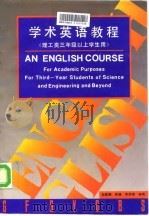
- 学术英语教程
- 1995 北京:国防工业出版社
-

- 英语词汇学教程
- 1997
-

- 英语口语教程
- 1992年4月第1版 东南大学出版社
-
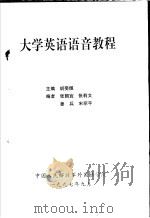
- 大学英语语音教程
- 中国人民解放军外国语学院
-

- 新编大学英语阅读教程 英文
- 1997 北京:航空工业出版社
-

- 日用英语教程 中级英语教程
- 1971 海涅曼教育图书出版公司
-
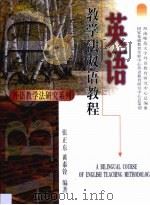
- 英语教学法双语教程
- 1999 北京:科学出版社
-

- 大学英语英译汉教程
- 1998 西安:西安交通大学出版社
-
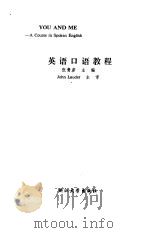
- 英语口语教程
- 1993 杭州:浙江大学出版社
-

- 英语口语教程
- 1999 北京:外语教学与研究出版社
-
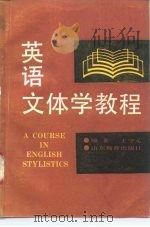
- 英语文体学教程
- 1990 济南:山东教育出版社
-
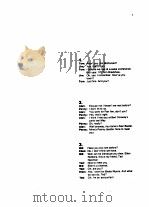
- 学生英语文库 英语交谈 美国英语听说教程 英文版
- 1993 牛津大学出版社
-
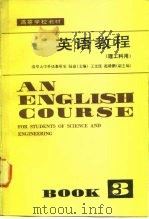
- 英语教程
- 1981 北京:人民教育出版社
-

- 大学英语教程
- 1983 北京:商务印书馆
提示:百度云已更名为百度网盘(百度盘),天翼云盘、微盘下载地址……暂未提供。➥ PDF文字可复制化或转WORD
